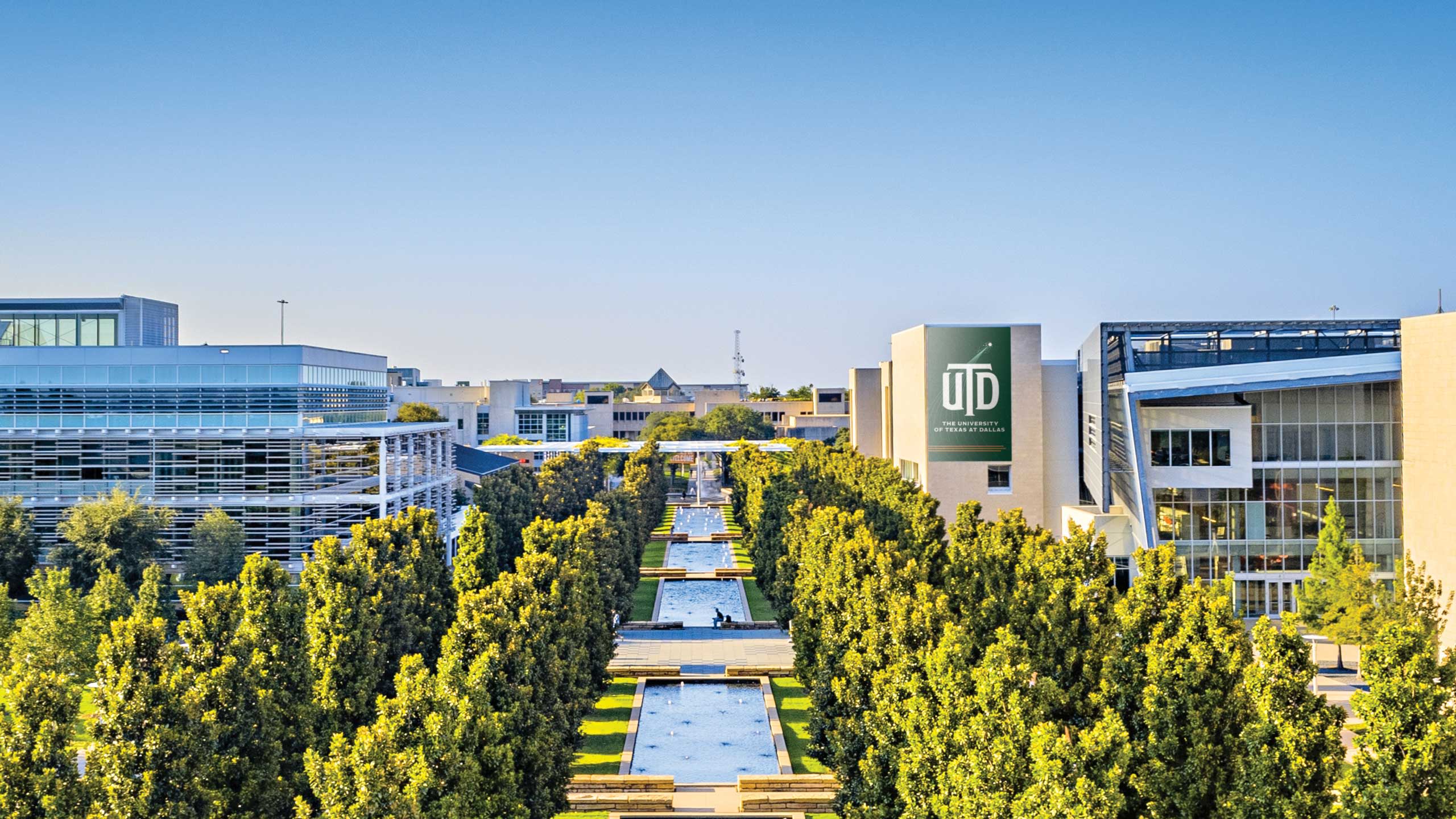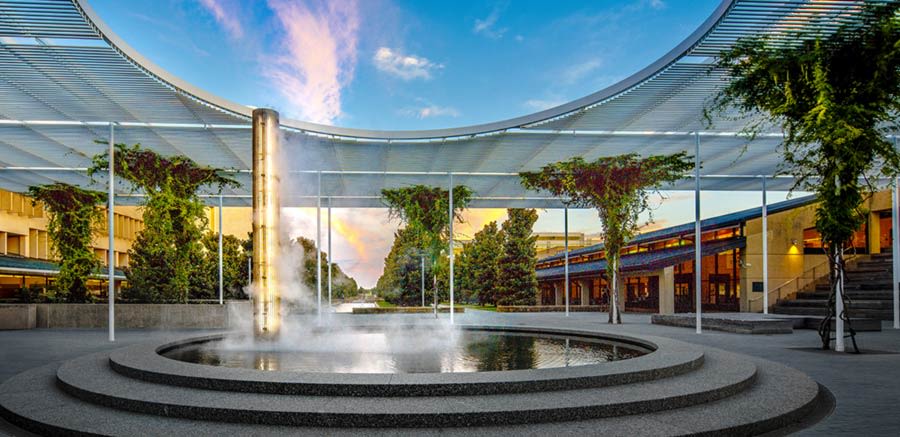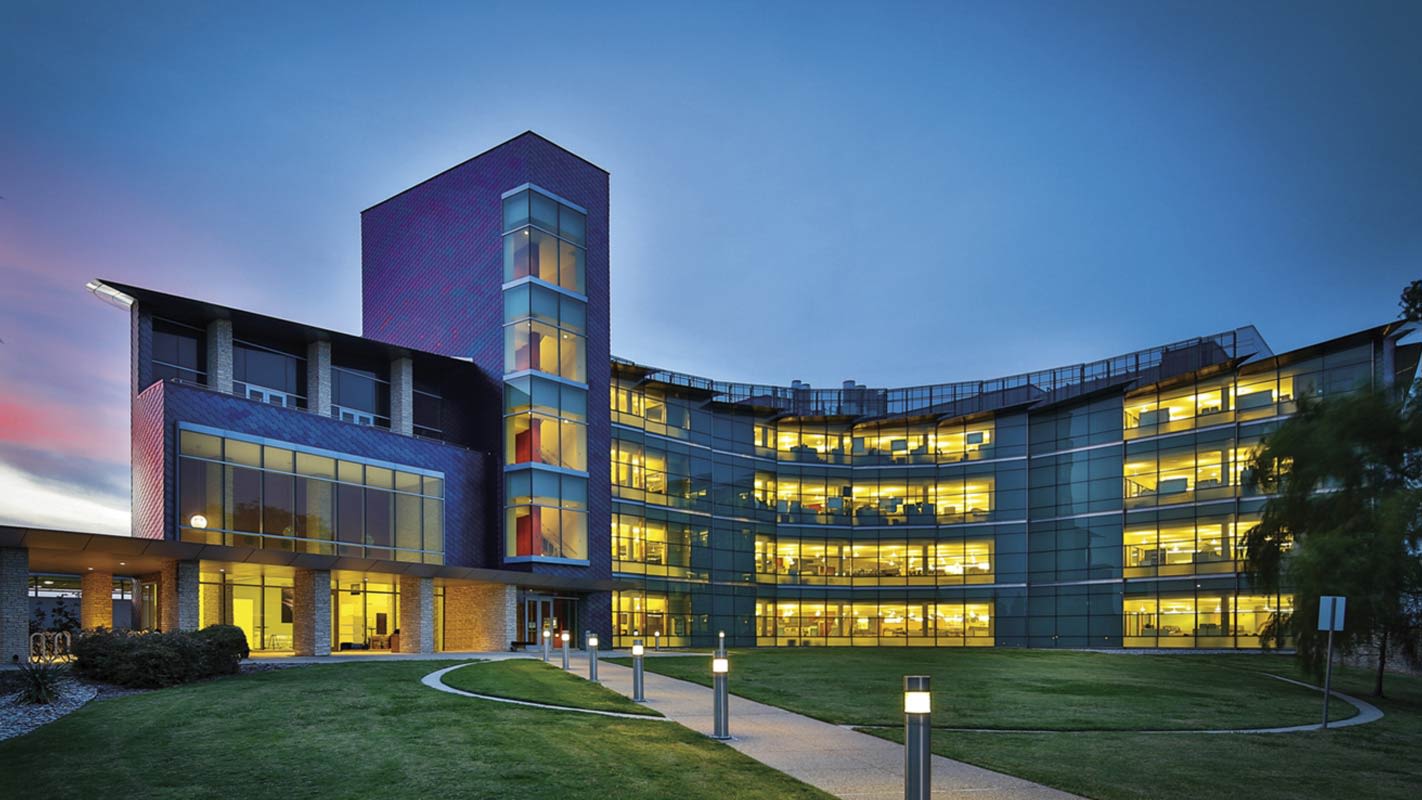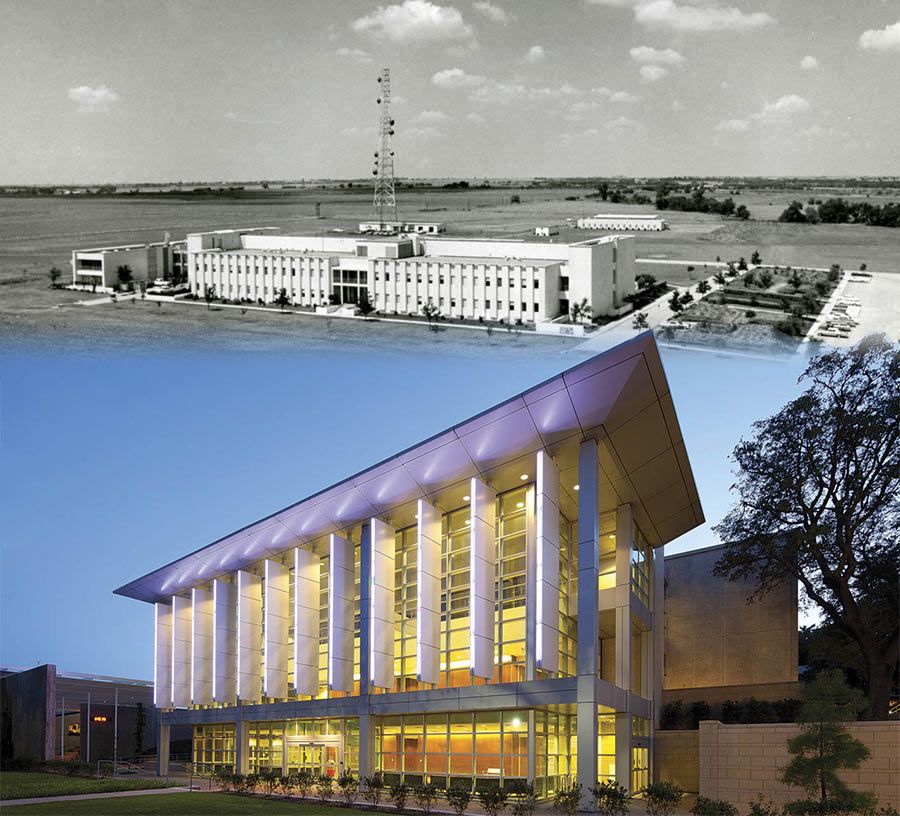Building new traditions in higher education
Created by founders of Texas Instruments, The University of Texas at Dallas is one of the nation’s fastest-growing colleges. Best known for its STEM and business programs, the university is carving a new niche in the arts.

At most universities, it would be heresy to make over the original building. College traditions are meant to endure, and the heart of the campus is to be preserved.
But The University of Texas at Dallas is not like most other colleges. From its unique origin story to its rapid recent growth in enrollment, facilities and academic programs in STEM and other fields, UT Dallas has not followed the traditional higher education script.
UT Dallas completed two major projects in 2010 that symbolized its upward trajectory. The university gave its nondescript original facility known as Founders Building a modern facelift. It also reconfigured the Mall, the concrete canyon of walkways that ran alongside Founders, into a signature space with linear reflecting pools and grassy tiers lined with magnolia trees.

UT Dallas President Richard C. Benson
UT Dallas President Richard C. Benson
The message was clear: UT Dallas would build new traditions atop its sturdy STEM foundation.
Because UT Dallas is an emerging university, “we’re not bound by tradition. We get to do new things,” university President Richard C. Benson said. “You never hear people say, ‘We’ve always done it this way so it’s never going to change.’”
At most universities, it would be heresy to make over the original main building. College traditions are meant to endure, and the heart of the campus is to be preserved.
But The University of Texas at Dallas is not like most other colleges. From its unique origin story to its rapid recent growth in enrollment, facilities and academic programs in STEM and other fields, UT Dallas has not followed the traditional higher education script.
UT Dallas completed two major projects in 2010 that symbolized its upward trajectory. The university gave its nondescript original facility known as Founders Building a modern facelift. It also reconfigured the Mall, the concrete canyon of walkways that ran alongside Founders, into a signature space with linear reflecting pools and grassy tiers lined with magnolia trees.
The message was clear: UT Dallas would build new traditions atop its sturdy STEM foundation.
Because UT Dallas is an emerging university, “we’re not bound by tradition. We get to do new things,” university President Richard C. Benson said. “You never hear people say, ‘We’ve always done it this way so it’s never going to change.’”

UT Dallas President Richard C. Benson
UT Dallas President Richard C. Benson

From research center to a large, modern university
Many U.S. universities have spun off research enterprises into new products and companies. At UT Dallas, it was the other way around.
UT Dallas originated with Texas Instruments, the pioneering technology company that recruited out-of-state talent because Texas universities didn’t produce enough engineers and scientists. Three of the company’s founders decided to change that.
In 1961 they established the Graduate Research Center of the Southwest in the Dallas suburb of Richardson. This new institution focused on graduate and postdoctoral teaching and research in mathematics, biology and other sciences. Eight years later, the state legislature incorporated the research center into The University of Texas System.
The new institution known as The University of Texas at Dallas had just one permanent structure — the Founders Building — surrounded by acres of wide-open prairie. Enrollment was just 62 graduate students. Juniors and seniors were admitted in 1975. The first freshmen arrived in 1990 and pushed enrollment to nearly 9,000 students.
Three decades later, UT Dallas is one of the fastest-growing public universities in the nation with seven schools and an enrollment that topped 31,000 this fall. Only six U.S. universities enrolled more National Merit Scholars in 2020. Its international student population is the 13th largest in American higher education.
In 2017, Times Higher Education ranked UT Dallas No. 1 in the U.S. among universities less than 50 years old. UTD sits third among Texas’ public universities in the annual U.S. News & World Report college rankings.
As enrollment surged, UT Dallas from 2007 to 2022 added or renovated more than 15 million square feet across campus. The nearly $2 billion campus transformation added multiple science and engineering buildings and several residence halls and major infrastructure improvements.
And in 2016, the Carnegie Classification of Institutions of Higher Education recognized UT Dallas as an R1 institution – a classification reserved for doctoral institutions with “very high research activity,” placing it among the top universities in the country.
All of these big numbers beg the question: What’s fueling the growth of this rocket ship of a university?
STEM with three Ms
STEM disciplines are a key part of the university’s DNA, but the E and T reign supreme. About 30% of all UT Dallas students are enrolled in the Erik Jonsson School of Engineering and Computer Science, and computer science is consistently the university’s most popular major.

Math remains the traditional M in STEM at UT Dallas. But the university is big into two additional Ms: management and medicine.
The Naveen Jindal School of Management is an enrollment juggernaut, just ahead of the Jonsson School as the largest academic unit on campus. The business school was launched in the mid-1970s to take full advantage of its location in the Dallas–Fort Worth Metroplex, home to 23 Fortune 500 companies. Today, UTD’s graduate business program ranks in the top 10 nationally among public universities, according to U.S. News & World Report. Its MBA, supply chain management, research ventures and other graduate specialties also have garnered multiple national rankings.
UT Dallas also ranks among the top 25 nationally in medical school applicants, thanks largely to strong programs in biology, neuroscience, healthcare studies, biochemistry, psychology and biomedical engineering.
“Dr. David Daniel, our fourth president, would tell you that the secret to our success is we never lost sight of our mission,” Benson said. “We’ve always been good at occupying this STEM niche and just keep getting better and better.”

Adding an A to make it STEAM
UT Dallas is moving to occupy another niche: in the visual and performing arts.
UT Dallas launched the Edith O’Donnell Institute of Art History in 2014. A philanthropist and longtime UTD supporter, O’Donnell envisioned a center for innovative research and education in the history of art that spanned geography, chronology and medium. It was the first art history research institute founded in the digital age.
Just five years later, UT Dallas secured a major art donation: the entire world-class collection of the Trammell and Margaret Crow Museum of Asian Art in Dallas.
To showcase these works, UT Dallas broke ground in May on the Edith and Peter O’Donnell Jr. Athenaeum — a three-building, 12-acre cultural district. The first building, scheduled to open in 2024, will house the Crow Museum of Asian Art. A performance hall with a 600-seat concert hall is next. The third building will hold the university’s growing collections of Latin American folk art.
That a university heavily invested in science and business would embrace the arts isn’t as far-fetched as it might seem, Benson said. In college, he majored in engineering — and played the trumpet in multiple bands and orchestras. Throughout his academic career, Benson said, he has run into many engineers with musical talents and artistic interests.
“Art informs science and engineering design. I love that niche, and we intend to occupy it," Benson said. “We’re going to be very strong at this intersection of arts and technology. It’s very much by design.”
‘Keep UTD Nerdy’
Benson keeps a coffee mug in his office that says “Keep UTD Nerdy.” It’s a takeoff of the slogan “Keep Austin Weird,” popularized in the state capitol, and it suggests that UT Dallas has remained much the same despite its massive growth.
Founders Building, albeit reconfigured, endures. The Mall is still the main pedestrian thoroughfare through campus, though there’s a lot less concrete than there used to be. Altogether, more than 8,000 trees were added to the campus during the landscape enhancement project. And UT Dallas remains a STEM school, though it now explores where science and technology intersect business, the arts and the social sciences.
Today’s UT Dallas is a bigger and better version of itself. And it remains nerdy.
“Our growth has probably outstripped anything that people could have imagined,” Benson said. “Sometimes I wish our founders could come back to campus and just see this incredible university that has grown up here.”
No football, no problem
Though UT Dallas doesn’t play football — a rarity in Texas, where football is akin to religion — the Comets still compete at a high level elsewhere:
- UT Dallas is a national powerhouse in chess. Since 1996, UTD has won five President’s Cups (also known as the Final Four of Chess) and 10 Pan-American Intercollegiate Championships.
- UT Dallas is the second-largest university to compete in NCAA Division III athletics. Its baseball, men’s cross country and women’s tennis teams have each won three conference titles in the past five years.
- Its four-year-old varsity esports program is already ranked No. 10 in the nation by BestColleges.com.

This custom content is sponsored by The University of Texas at Dallas and developed by Inside Higher Ed's sponsored content team. The editorial staff of Inside Higher Ed had no role in its creation.

